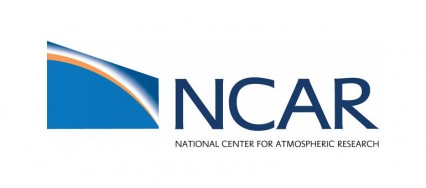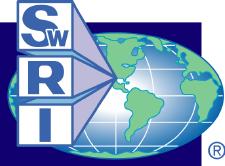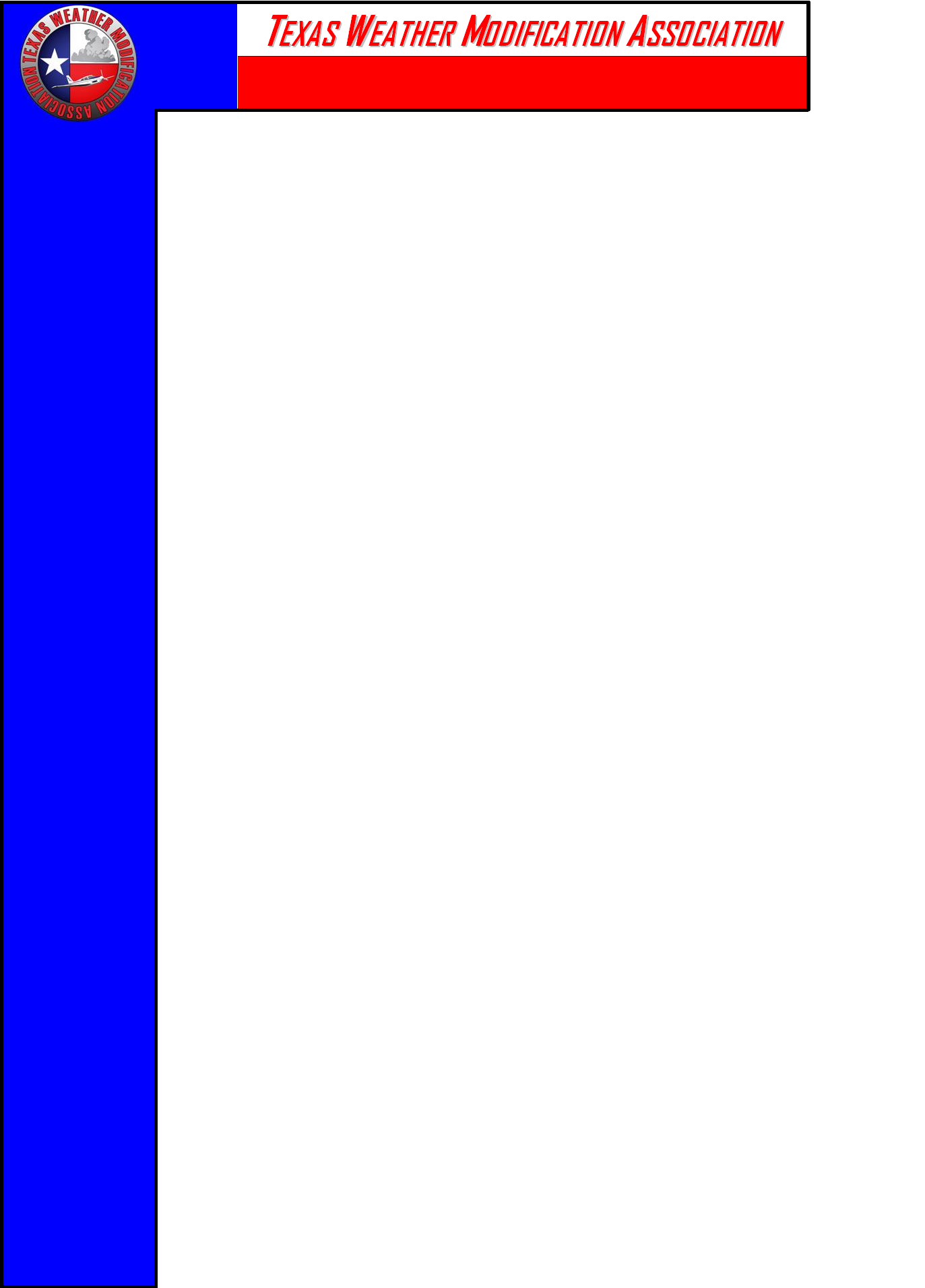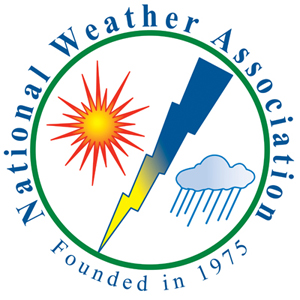2. How successful is cloud seeding?
3. What impact does cloud seeding have on hail?
4. Will the silver iodode or other materials reach the earth?
5. What about the "downwind effect" of cloud seeding?
6. What role does the State of Texas assume in weather modification?
7. Where is cloud seeding being done in Texas?
8. What does one do to get a cloud seeding program underway?
1. How does cloud seeding work?
Cumulus clouds–the billowy, cauliflower-shaped clouds often seen in Texas skies during much of the year–are
important rain
producers in every sector of the state. As the predominant cloud type during the warmest eight months of the year (March-October),
cumulus (or convective) clouds are responsible for producing the bulk of rainwater given by the atmosphere in any given year in
Texas. These towering cloud formations form from strong updrafts of warm, moist air into an atmosphere that is unstable. Intense
daytime heating of the near-surface layer of air, or a wedge of cold air moving across the state (as a cold front), usually triggers the
formation of convective clouds.
Not all cumulus clouds become rain producers. In fact, only a small percentage of them ever develop the capability to yield an
appreciable amount of rainfall. Those convective clouds that do produce rainwater are often inefficient: For all the moisture they
incorporate from below, only a tiny fraction of that moisture (as cloud droplets) is ever used to grow large raindrops, which ultimately
fall to the ground as rainfall. This may be due to the fact that an insufficient number of ice particles exists within the cloud, thereby
limiting the amount of cloud droplets that can coalesce to create raindrops. Or the clouds simply do not live long enough, on their
own, to allow those tiny cloud droplets to collide enough times with
neighboring droplets to yield larger drops–and eventually
rainwater. Seeding is intended to introduce into the cloud many more of these ice crystals (also called cloud nuclei) to allow much
more of the moisture supply within the cloud to be converted into rainwater.
f
done in a timely way and properly, cloud seeding can assist the natural
process in clouds by giving them enough "seeds" to make a meaningful number of large raindrops. If a lot of the growing convective cloud has pushed upwards above the freeze level, the bulk of the cloud water above that freeze level becomes supercooled (which is to say, the cloud droplets remain in liquid form and do not turn into ice). But those supercooled cloud droplets readily attach to an ice crystal (natural or artificial), converting the ice crystal into a tiny snowflake or graupel, which can quickly grow into a raindrop before the cloud begins to collapse.Silver iodide is a favored seeding agent because its crystalline structure is nearly identical to the natural ice crystal. When placed in the upper portion of the growing convective cloud rich with supercooled droplets, the silver iodide crystal can grow rapidly by tapping that vast field of available moisture. Indeed, because the vapor pressure gradient over ice is less than that over water, an ice crystal such as silver iodide will more readily attract the tiny cloud droplets than those droplets will collide with each other. In a matter of moments, the ice
crystal is transformed into a large raindrop which is heavy enough to fall through the cloud mass as a rain shaft.
The silver iodide particles (nuclei) are sometimes released from below cloud base, using the strong updraft of the cloud to transport the "seeds" high into the core of the cloud where supercooled cloud droplets are plentiful. Pyrotechnics, or flares, consisting of silver iodide burn while mounted on the wings of an aircraft that maneuvers within the updraft field below the bottom of the cloud. At times the seeding material can be dispensed below cloud base from an aircraft that is equipped with wing-tipped generators that contain a solution of acetone mixed with seeding material. The seeding of clouds may also be achieved from above cloud top, using an aircraft equipped with a rack containing ejectable pyrotechnics. These droppable flares are ignited as they fall from the plane’s belly into the upper region of seedable convective clouds. Either way, from above cloud top or below cloud base, seeding with silver iodide is designed to give an ample number of "seeds" with which to grow rainwater:
one gram of silver iodide can supply as many as ten trillion
(10,000,000,000,000) artificial ice crystals.
Some
convective clouds, especially in drought periods, never cultivate
much "supercooled" cloud droplets, so seeding with silver
iodide may be counterproductive. The clouds still have an
immense amount of water in the, but most, if not all, of it remains as very tiny droplets well below the freeze level. In these instances, a hygroscopic material (like common salt) may work
better than silver iodide to seed such clouds effectively.
2.
How successful is cloud seeding?
Over 50 years of research and actual cloud seeding in more than 40 countries have demonstrated that properly-designed programs operated by competent persons can increase seasonal
rainfall appreciably and beneficially. The American Meteorological Society (AMS) and the World Meteorological Organization (WMO) have issued policy statements on weather modification that
attest to the efficacy of existing technology to enhance precipitation.
It is likely that cloud seeding is more effective in non-drought periods. This is because seeding is predicated upon the availability of clouds—especially the right kinds of convective clouds. It
is presumed that, during severe to extreme droughts, the number of days with treatable convective clouds is reduced. Still, there is ample evidence suggesting that, even when drought is
harsh, there are opportunities to seed clouds.
Consequently, those using weather-modification technology are urged to view cloud seeding as a viable, long-term water management strategy for augmenting fresh-water supplies, not as a
short-term, quick "fix" to the drought problem. Those doing cloud seeding are urged to commit to its use over a period of at least several years, not merely for a few months. If cloud seeding is
done in the midst of a bad drought and results are not satisfactory, the inclination after a few months is often to deduce that cloud seeding, because it does not appear to have been delivered
the desire results, should be discarded. It cannot be overstated that drought is not the optimal time period for cloud seeding.
Using Federal funds to assess the long-running rain-enhancement program of the CRMWD in the Big Spring area during 1987-1990, the TNRCC performed a series of cloud-seeding "experiments" which produced evidence that timely seeding, with silver iodide, enables convective clouds to live longer, process more cloud water, and produce significantly more rainfall (from 50 to 100
percent from individual cells). Moreover, an ongoing statistical evaluation of the CRMWD’s 29-year cloud seeding program has revealed that rainfall, averaged over the growing season in the area where seeding has been concentrated, has been increased, during the years of seeding, by an average of 20-30 percent. A similar study of rainfall data from a 5-year cloud-seeding program conducted for the City of San Angelo (1985-1989) found that rainfall during the months of seeding in the area where seeding was focused had been increased 25 to 42 percent.
For the past several years, the Texas Department of Agriculture has conducted independent evaluations of ongoing seeding activities in Texas. A statistical analysis of all seeded thunderstorms in Texas during 2002 (which totaled 897) estimated that an additional 481,252 acre-feet of water was generated as a consequence of seeding. Comparing the seeded storms with neighboring untreated storms (designated as “control clouds” for the sake of analysis) revealed that seeded storms lived 39 percent longer, covered 18 percent more territory, and produced a “precipitation mass” that was 89 percent greater than for cloud towers left unseeded. During the year, a total of 5,090 pyrotechnics (flares) containing seeding material were dispersed at the ten projects. It was estimated that the seeding activity provided eligible (“seedable”) thunderstorms with 30-40 ice nuclei per liter of air
within the cloud mass.
There is no evidence that the seeding contributes to less rainfall anywhere else. What is more, there is no evidence that seeding causes clouds to grow substantially taller and produce
unwanted effects (such as damaging winds, hail, and flash floods). To the contrary, the available evidence from over eight years of research in West Texas suggests cloud seeding, when
done timely and accurately, contributes to more gentle, widespread, and longer-lasting rains.
3. What impact does cloud seeding have on hail?
Though very little research on hail suppression has been done in Texas, we do know from sound research conducted in other parts of the U. S. that seeding for enhancing rainfall very likely
lessens the amount, and size, of hailstones. This is because the
additional ice crystals injected into a growing thundercloud compete
with the hail seeds (or "embryos") for the available cloud
moisture, thereby reducing the chance that many hailstones would grow large. With the ice crystals using more of the available cloud droplets to grow large raindrops, there would be less
cloud moisture available to grow the embryos into damaging hailstones.
Seeding clouds to suppress hail, on the other hand, appears to increase the efficiency with which the clouds convert the cloud droplets into rain. Thus far, available evidence suggests that
seeding for hail suppression, if anything, increases, rather than
decreases, rainfall from seeded storms. No evidence has been proffered to suggest that seeding clouds to suppress hail has
the effect of breaking up the clouds to prevent their natural course of developing rainfall.
**The TWMA mistakenly mixed up the words "increases" and
"decreases" in the above paragraph suggesting hail suppression decreases
rainfall. This was inaccurate and overlooked by the TWMA. Research
conducted by many hail suppression programs have confirmed that hail
suppression does indeed increase rainfall as the methods for rain
enhancement and hail suppression are very similar.**
4. Is there a large amount of silver iodide, or other material, in the rainfall that reaches the ground from seeded clouds?
Actually, the amounts of silver detected from rainwater samples collected in Texas have been quite small. The typical concentration of silver in rainwater, or snowfall, from a seeded cloud is
less than 0.1 micrograms per liter (one part in 10 billion). That concentration is well below the acceptable concentration of 50 micrograms per liter as established by the U. S. Public Health
Service. Many areas where cloud seeding is practiced have much higher concentrations of silver in the soil than are found in rainfall from seeded clouds. Moreover, the concentration of iodine
in iodized salt used on food is far above the concentration found in rainwater from a seeded cloud. No significant environmental impacts have been observed around cloud-seeding operations,
including those projects that have been existent for 30-40 years.
5. What
about the “downwind effects” of seeding?
The notion that rainfall increases produced in one area by seeding must be offset by decreases somewhere else has never been substantiated. Rainfall data from a number of cloud-seeding
project areas have been examined in detail for evidence of “extra-area” effects.
In some cases, there is evidence that cloud seeding in one
area has actually increased rainfall at distances of
up to 100 miles, or more, downwind from the area of intended effect. This has been documented with the long-running (30-year) rain-enhancement program of the Colorado River Municipal
Water District.
6. What role does the State of Texas assume in weather modification?
The Texas Department of Licensing and Regulation (TDLR) is the State agency responsible for administering the Texas Weather Modification Act, enacted in 1967 by the Texas Legislature and
now codified as Chapter 79 of the Texas Administrative Code. The Act requires the agency to regulate the use of cloud seeding through a licensing and permitting procedure. Furthermore, the
Act charges the TDLR with promoting the development, and demonstration, of cloud-seeding technology through research.
A companion state agency, the Texas Department of Agriculture (TDA), has been given the role of helping to sponsor rain-enhancement activities in cooperation with political subdivisions.
Since the 75th Texas Legislature first began providing State funds to reimburse political subdivisions for costs incurred in conducting cloud seeding operations. TDA (as well as its
predecessor agency, the Texas Natural Resource Conservation Commission (TNRCC)) has been the sole source of State funding for newly-designed and implemented weather-modification
projects. State funds are available to cover the costs of continuing, and new, cloud-seeding projects through the summer of 2003. Any additional funding, for operations in 2004 and beyond,
must await action by the current (78th) Texas legislative session.
The TDLR can provide the expertise to help interested citizens, and organizations, devise and implement weather-modification programs. TDLR staff is available to conduct public meetings to
inform citizens of the potential of cloud seeding as well as provide guidance on how to organize a rain-enhancement program. George Bomar is the staff meteorologist who administers the
Weather Modification Act and who directs the State’s
weather-modification program in cooperation with various
regional and local water interests. If assistance is
desired, he can be contacted
in Austin at 512/936-4313. Dale Bates, who works for the TDA as an information specialist, is also available to help with the design and implementation of cloud-seeding projects. He can be
reached in San Angelo at 915/949-2229.
7. Where is cloud seeding being done in Texas?
Colorado River Municipal Water District (CRMWD) – formed
in 1971, this region covers 2.6 million acres (or about
4,000 square miles) between Lubbock and Midland. It
includes the counties
of Borden, Scurry, Howard, Mitchell, Nolan, Coke.
West Texas Weather Modification Association (WTWMA) – formed in 1995, this region covers 6.4 million acre area on the Edwards Plateau. It
includes the counties of Glasscock, Sterling,
Reagan, Iron, Crockett, Schleicher, Sutton.
Southwest
Texas Rain-Enhancement Association (STREA) – formed
in 1999, this region includes the counties of Uvalde,
Zavala, Dimmit, La Salle, Webb.
South Texas Weather Modification Association (STWMA) – formed in 1996, this region covers 6.6 million acres from San Antonio to Beeville. It
includes the counties of Bandera, Bexar, medina,
Frio, Atascosa, Wilson, Karnes, McMullen, Live Oak, Bee.
North Plains Weather Modification Program (NPWMP) - formed in 2000, this region covers 8.2 million acres in combination with the Panhandle region. It
includes the counties of Dallam,
Hartley, Sherman, Moore, Mansford, Hutchinson, Ochiltree, Lipscomb.
Panhandle Groundwater Conservation District (PGCD) – formed in 2000, this region covers 8.2 million acres (combined with North Plains). It
includes the counties of Roberts, Potter,
Carson,
Gray, Wheeler, Randall, Armstrong, Conley.
Southern Ogallala Aquifer Rain Program (SOAR) – formed
in 2002, this region covers 5.8 million
acres and is the only weather-modification
program that embraces territory in both
Texas and a
neighboring state. It includes the counties of Gaines, Yoakum, Terry and part of New Mexico.
Trans Pecos Weather Modification Association (TPWMA) - formed in 2003, this area covers 5.1 million acres in the region between El Paso and Midland. It includes the counties of Culberson,
Reeves, Ward, Loving.
The first weather-modification project to be established in an area without a water district was that of the West Central Texas Weather Modification Association (WCTWMA), which formed and
sponsored cloud seeding services, provided by a contractor, in the summer of 2002. The project, which covers 4.9 million acres of the Big Country; has radar and aircraft based at Elmdale
Airport in Abilene.
8. What does one do to get a cloud-seeding program underway?
The area within which cloud seeding would be performed must be identified at the outset of any effort to build a rain-enhancement program. A next step would be to identify the source, or
sources, of funding to cover the expense of seeding. Once this is accomplished, the individual or organization sponsoring the effort needs to draw up a set of specifications, giving details on
how the operation is to be conducted
(e.g. what type of aircraft are
to be used). The State of Texas,
through the TDLR’s meteorologist
George Bomar (512/936-4313), can
provide a generic set
of specifications that can be adapted
to a specific region and time.
These "specs" are then
provided potential contractors,
whose responses in the form of
bids can lead to further negotiations.
If a contractor is chosen, it may
be the contractor’s responsibility
to obtain a weather-modification
license, and permit, from the TDLR.
On the other hand, the sponsoring
group(s) may opt to
apply for the license and permit. Increasingly, with the help of existing projects and State assistance, some sponsors are choosing to establish their own cloud-seeding infrastructure (in lieu of
choosing a contractor), procuring their own seeding aircraft and radar and hiring their own personnel to run the operation. In those instances, the sponsor(s) would become the applicant for a
license and permit.
Weather modification law in Texas
requires the applicant for a permit
to publish a "Notice of Intention to Conduct Weather-Modification Operations" in
area newspapers for three consecutive
weeks. This Notice apprizes the public of its right to request a public hearing on the proposed cloud-seeding project. In the absence of a call for a hearing, a permit application can be
processed by the TDLR within 30-60 days.
Visit our Programs:
PGCD - Whitedeer, TX
SOAR -
Plains, TX
STWMA - Pleasanton, TX
TPWMA -
Barstow, TX
WTWMA - San Angelo, TX
Links of Interest:
 Texas Dept. Licensing and Regulation |
 National Center for Atmos. Research |
 Southwest Research Institute |
 Desert Research Institute |
Associations:



